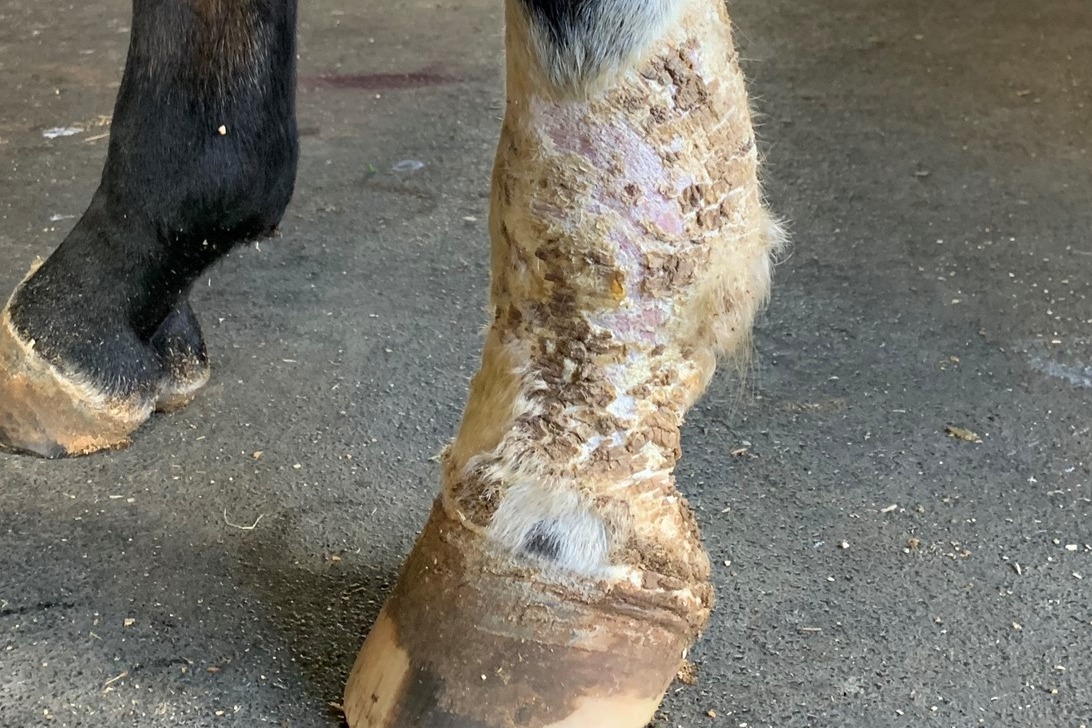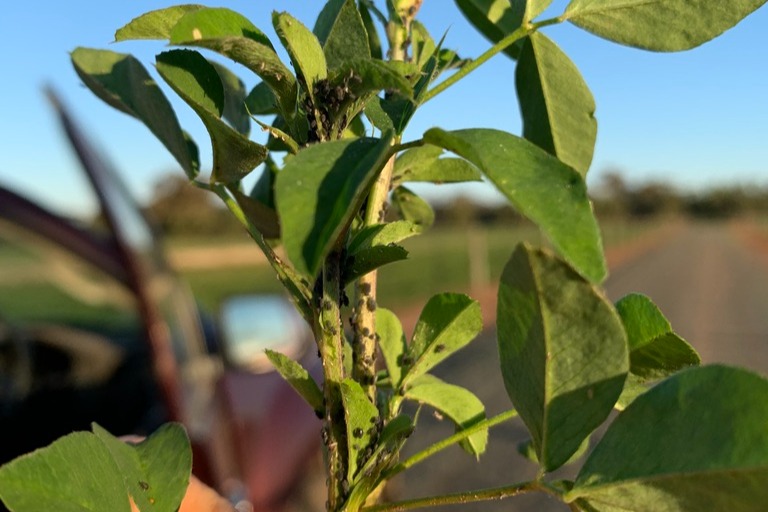They may be tiny, but Cowpea aphids are a cause for concern among thoroughbred horse owners. The 2-5 mm long black bug infests older varieties of Lucerne pastures, and these infestations are linked to photosensitisation in horses.
In Autumn 2020, two thoroughbred horse studs in northern Victoria reported severe cases of photosensitisation after their horses had been grazing lucerne pastures. These horses required stabling and intensive treatment.
Although there is certainty around the link between Cowpea aphid infestation and photosensitisation in horses, the exact cause of the photosensitisation is unknown. Researchers are still working to determine if the accidental consumption of the aphid itself or the consumption of affected feed is the cause of the problem.
What is photosensitisation?
Photosensitisation causes the skin to become overly sensitive to sunlight, with this comes redness and swelling, followed by the development of lesions on the skin. Animals with areas of unpigmented skin, which is typically pink, are at higher risk of developing lesions. This usually occurs under white hair, on the muzzle and limbs.
Affected horses should be removed from infected pastures immediately and veterinary treatment may be required. The lesions are typically slow to heal and result in scarring.












